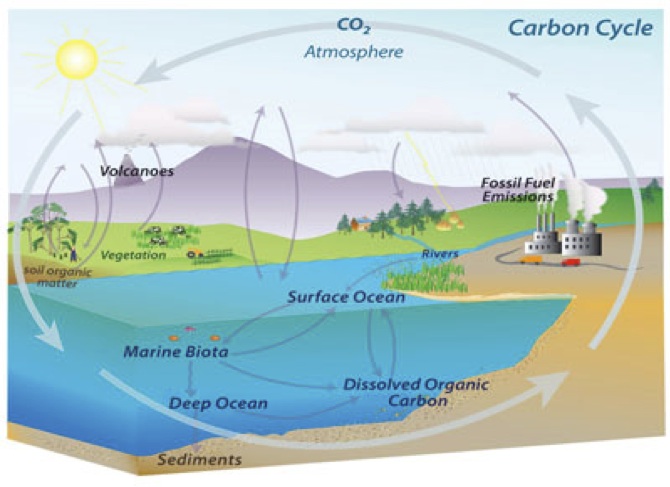Global Carbon Cycle
Every year around 10 Gigatons of carbon (that’s 10 x 109 tons of carbon per year, written as GtC/yr) is emitted by combustion of fossil fuels. Where does all this carbon come from? Where does it all go? How does it get there? And, is it possible to get it there faster? These questions and more are the main focus of Biocycle, also known as the Denning Research Group. With all the recent talk about climate change, going green, and reducing carbon footprints, these questions are more important than ever. Our research, and the research of groups like ours, will help to answer these questions, provide knowledge, and lead to change.

Anthropogenic carbon emissions are strictly regulated and documented, so the 10 GtC/yr is a well defined approximation. Where does all this carbon go? From taking measurements, either physically or remotely, we know that about half is added to the carbon in the atmosphere. Another 2 GtC/yr is dissolved into the oceans. This carbon is documented by tracing the concentrations of radioactive carbon dissolved into the oceans. Then 2 GtC/yr remain that land surfaces need to account for.
The most important thing we know at the moment is that we don’t know enough. Continued research and public outreach are vital to this branch of science. With every experiment, every project, we are learning. Every success and even every failure gets us that little bit closer to the answers that will shape the future of life on the planet.


